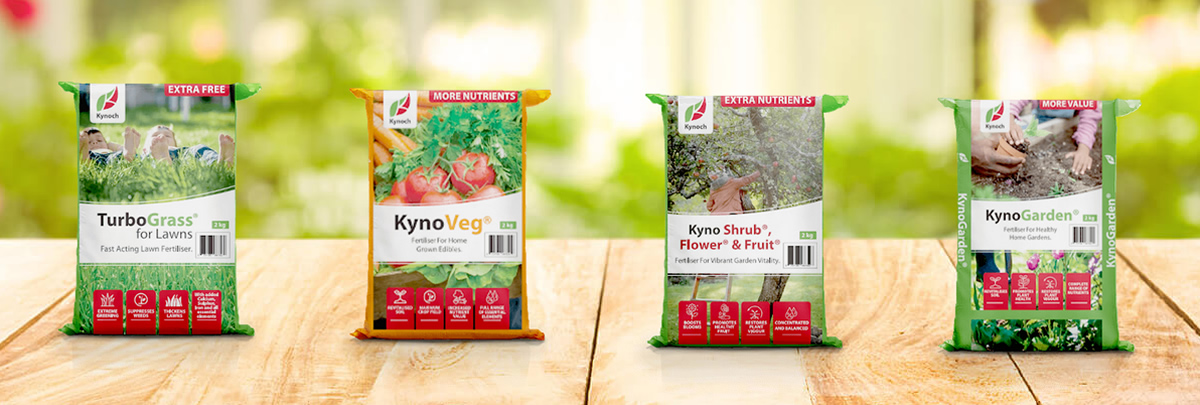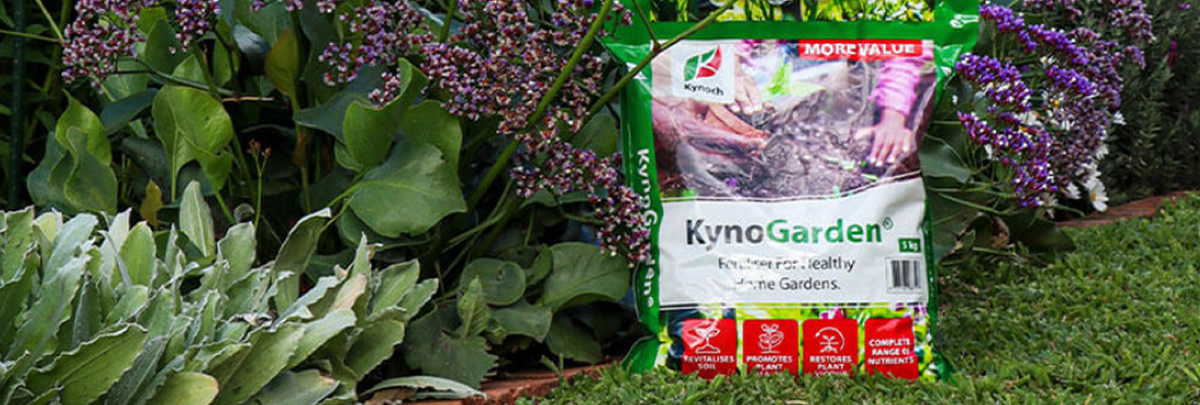Frequently Asked Questions
The perfect fertiliser blends for your flowers, veggies, lawn or fruit.

The perfect fertiliser blends for healthy gardens.

There are 16 essential plant nutrients which are classified as macro, secondary or micro elements. The classification refers to the relative amounts in which the nutrients are needed by the plant.
Primary nutrients needed by plants in the largest amounts are a known as macronutrients. The most important macro nutrients are nitrogen (N), phosphorus (P) and potassium (K) Secondary macro nutrients include sulphur (S), calcium (Ca), magnesium (Mg), carbon (C), oxygen (O) and hydrogen (H).
Micronutrients are essential plant nutrients that are found in very small amounts but play an imperative role in plant growth and development. Without these nutrients, plant nutrition would be compromised. Micronutrients (or trace minerals) include iron (Fe), boron (B), chlorine (Cl), manganese (Mn), zinc (Zn), copper (Cu), molybdenum (Mo) and nickel (Ni).
Nitrogen is the most important of the plant foods. It has the following benefits:
South African soils tend to be low in nitrogen.
This nutrient is often missing in our soils. Phosphate has many physiological roles in the plant, but there are a couple that are very important.
The difference lies in the process used to make the fertilizer. A chemical fertilizer is an artificial blend with a regulated quantity of nutrients. An organic fertilizer utilizes natural materials.
The Kynoch range of fertilizers are inorganic.
If fertilizer is left on a dry plant or too close to the stems, without being watered, the plant will most likely burn. It is always recommended to water after application.
The 3 main numbers represent what is known as the NPK of the product:
N – Nitrogen (Nitrates)
P- Phosphorus (Phosphates)
K – Potassium (Potash)
For example, 10-.1.5 fertilizer has 10% nitrogen (N), 1% phosphorus (P), and 5% potassium (K)
These three macro nutrients are needed in relatively large quantities by most plants.
Usually bulking agents, known commonly as fillers, are added to most chemical fertilizers to manage the concentration of the fertilizer product. Filler has no nutrient value. No filler is added to the Kynoch Garden Range products. Instead, the other 75% of the product is made up of trace elements.
A new innovative product available from Kynoch is called Kynoplus. Kynoplus is urea treated with Agrotain and forms the basis of Nitrogen in the Kynoch Garden Range.
There are two sources of nitrogen that are usually used in fertilizer blends, LAN and Urea. Both have certain advantages and disadvantages.
Potassium has many functions in the plant but is mostly involved in the transport of the plant’s building blocks (sugars and amino acids) from the roots to the leaves and the leaves to the fruits. Potassium (Potash) improves the quality and quantity of flowers, and the flavour of fruit and vegetables. Potassium is especially necessary for root crops where it is stored as starch. As a critical component of plant reproduction, adequate potassium also increases the amount and quality of seeds formed by plants.
Potassium is vital in the process of photosynthesis, by which plants make food for growth. It is needed to produce strong stems. Healthy growth makes plants resistant to drought and extreme temperatures. It should be added to over-wintering plants in autumn, especially roses and deciduous fruit trees to make them more frost or cold resistant.
Different sources of potassium can be added to fertilizer. In the Kynoch Garden Range, no potassium chloride was used. Thus, the products classified as low chloride products.
There are several reasons why a plant may look sick:
Always try and analyze first why your plant is not doing well. Fertilizer may not always be the answer to the problem and could make it worse.

Poor or slow growth and overall yellowing are signs that a plant may be lacking essential plant nutrients.
The rate and frequency of application depends on several factors which include the soil type and its health, the type of plant and the nutrient analysis of the fertilizer being used. Carefully read the information on the Kynoch bags to assist you in applying the right amount of fertilizer at the correct frequency or consult the product information on our website.
The general recommendation for lawns and gardens is to feed every 6-8 weeks.
A granular fertilizer is often applied to vegetable gardens at the beginning of the growing season, usually at planting or prior to planting. Annual flowers may require more frequent fertilization throughout the growing season, especially if they are growing in containers.
Results from the use of Kynoch granular fertilizers should be seen within 3-5 days, depending on the amount of moisture and heat in that period.
It is recommended to wait a week and then decide if you do not see results. Sandy soils may require a reapplication but usually there will be enough remaining nutrients in the soil to have effect. The same rule applies, err on the side of caution to prevent unnecessary expense and damage to plants.
With the innovation of Agrotain, TurboGrass is unlikely to burn your lawn. Apply in the cool of the day, in the morning or late afternoon and water well after applying.
It is not essential but is safer for the plant.
Use a fertiliser with high potassium content. For example Kynogarden 3.1.5 (25).
More generous amounts of fertilizer can be given to fast-growing shrubs such as hibiscus and hydrangeas. Slow growing shrubs, such as azaleas, camellias and gardenias prefer small regular applications.
Over-fertilizing will cause stress in plants, which ultimately weakens them and makes them susceptible to pests and diseases. The most severe problem caused is iron chlorosis.
Signs of over application of fertilizer include the following:
Less is always better than more when using fertilizer. Always err on the conservative side and use less fertilizer than too much.
Always read and follow the label recommendations for fertilizer rates and application guidelines.
Side dressing: Fertilizer is applied around the plant in a band of 5cms to the side of the plant with a depth of 5cm during the growth period.
Broadcasting: This is the most common method and is generally used for lawns, flower beds, trees and vegetable gardens before planting and for general maintenance. It involves spreading fertilizer by hand or applicator evenly over the surface of the target area.
Top Dressing: Predominantly when the aim is to revitalize an area, such as one’s lawns, fertilizers are incorporated into a top dressing soil mix and applied by hand. The top dress mix may include compost and sand.
Targeted application: Fertilizer is applied directly to a targeted plant at planting or when a specific plant is in distress. Care should always be taken that no part of a plant comes in contact with the fertilizer. If applied in the hole at planting, a layer of soil must be put between the root system and the fertilizer.
Do not apply fertilizer on an abnormally hot day, not even in the morning. Fertilize on cooler days. Generally early morning or late afternoon are good times to apply fertilizer. Early evening applications avoid the risk of the leaves or blades of grass being scorched by the sun. At night plant energy levels are also lower and allow them to absorb nutrients from the soil more easily.
Use a fertilizer with a high nitrogen content. For example,10.1.5 TurboGrass will give lawns a quick, effective boost.
To strengthen root development, you need to use a fertilizer that is rich in phosphate, such as KynoGarden 2.3.2 (25). It is best to incorporate phosphates into the soil when planting, so use during preparation.
Yes, but be careful not to apply too much or too close to the plant stems. Water in after applying. The advantage to use indoors is that the product does not smell.

Compost and mulching are a great way to improve the quality, or humus content, of the soil and will benefit your garden. However, compost alone will not provide sufficient nutrients for optimal plant health. It may contain too much nitrogen or not enough macro or micronutrients, leading to some deficiencies or a delay in fruiting and flowering. Many of our natural soils tend to be light and sandy and nutrients are leached out of the soil fairly quickly by natural and artificial watering. To keep our gardens thriving, we need to give the soil supplementary amounts of fertilizer.
Make sure the fertilizer bag is closed tightly and placed in a cool, dry place. Do not store near pool or cleaning chemicals. Make sure children and pets do not have access to the bag.
Plants deficient in zinc will have reduced height, interveinal chlorosis, brown spots on the upper leaves and distorted leaves.
Oil crops, legumes, forages and some vegetable crops require sulphur in considerable amounts. Sulphur has various functions in the plant.
It has a wide range of key roles in many plant functions.
Iron is also involved in many internal plant processes. Iron is involved in the formation of chlorophyll, and it is essential for the maintenance of chloroplast structure and function. Thus, it is critical to maintain the “factory” of the plant.
Copper is involved in many internal plant processes. Deficiency in copper can thus alter essential functions in plant metabolism.
No. However they can deteriorate if allowed to get wet or left in hot sun for too long.
Fertilizers should be kept out of the reach of children and pets. Casual contact will not harm them. Consult your doctor if they eat a quantity of fertilizer.
Plants deficient in potassium will have the following symptoms evident on their leaves:
In addition, there may be poor root, seed and fruit development .
Calcium (Ca) plays an extremely important role in producing plant tissues and it enables plants to grow better.
Zinc is involved in the synthesis of certain proteins and plant growth hormones. Zinc is used in the formation of chlorophyll. The presence in plant tissue helps the plant to withstand cold temperatures. In these products zinc is added by blending zinc into the product and by Zinc Impreg. Zinc Impreg refers to the process where zinc is spayed onto each gradual and is absorbed by the granules. This ensures a good distribution of zinc when applying the product.
Manganese plays an important role in photosynthesis. Manganese is also involved in pollen germination, pollen tube growth, root cell elongation and resistance to root pathogens.
Boron is needed for pollination. It’s also closely related to some functions that calcium performs.
| Cookie | Duration | Description |
|---|---|---|
| cookielawinfo-checkbox-analytics | 11 months | This cookie is set by GDPR Cookie Consent plugin. The cookie is used to store the user consent for the cookies in the category "Analytics". |
| cookielawinfo-checkbox-functional | 11 months | The cookie is set by GDPR cookie consent to record the user consent for the cookies in the category "Functional". |
| cookielawinfo-checkbox-necessary | 11 months | This cookie is set by GDPR Cookie Consent plugin. The cookies is used to store the user consent for the cookies in the category "Necessary". |
| cookielawinfo-checkbox-others | 11 months | This cookie is set by GDPR Cookie Consent plugin. The cookie is used to store the user consent for the cookies in the category "Other. |
| cookielawinfo-checkbox-performance | 11 months | This cookie is set by GDPR Cookie Consent plugin. The cookie is used to store the user consent for the cookies in the category "Performance". |
| viewed_cookie_policy | 11 months | The cookie is set by the GDPR Cookie Consent plugin and is used to store whether or not user has consented to the use of cookies. It does not store any personal data. |